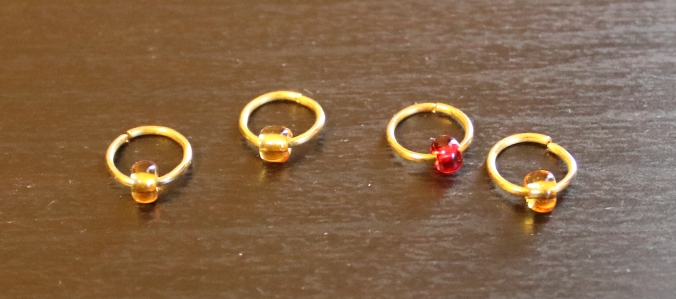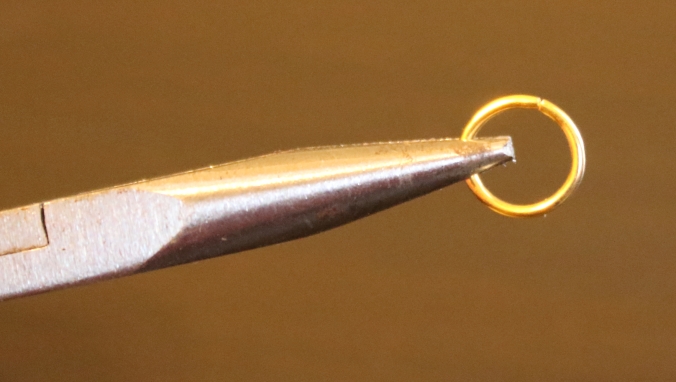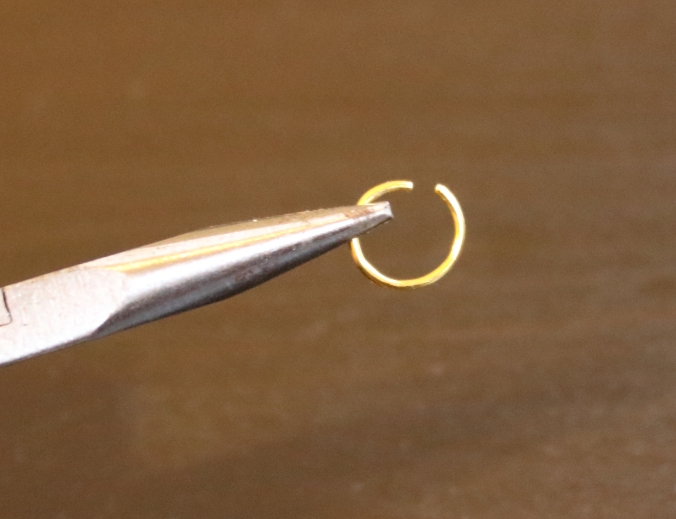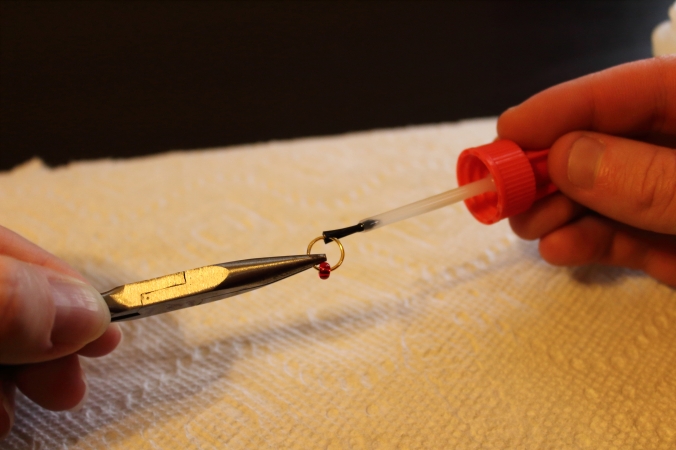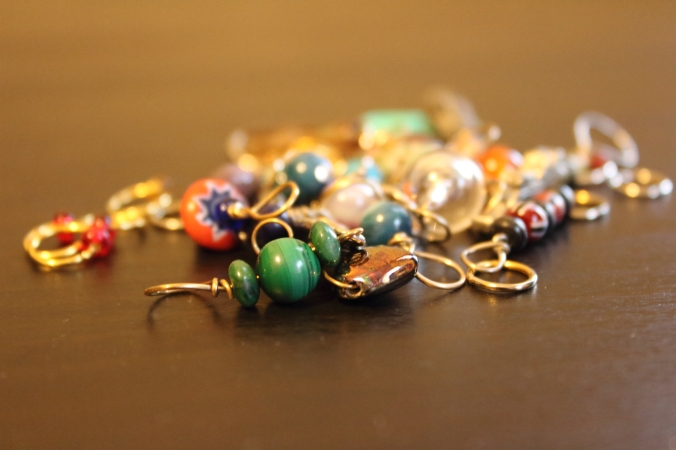
I love stitch markers. I use them in all my designs. A while back I posted how to make simple beaded jump rings with seed beads. You can see that tutorial here.
Today I’m going to walk you through the process of making the unique markers that I use to denote beginning of rounds. You can make unique markers from many different types of beads so they are easy to personalize and make very nice last minute gifts for knitters on your list!
Making these beaded stitch markers does use more tools and findings (easily found online or at a craft store) and some practice.

First gather your supplies. You’ll need:
- stainless steel headpins or eyepins
- beads, beads and more beads
- sacrificial straight knitting needles in US sizes 7 and 10 or so (unless something goes wrong you should be able to use the same needle for hundreds of stitch markers but it might get scuffs or scratches making it no longer usable for yarn)
- needle nosed pliers
- rounded jewelry pliers
- wire cutters
- small container to hold the beads and bits as you work
If you’re buying your beads online, two of my favorite sources are Fire Mountain Gems and Shipwreck Beads. They both also carry all the tools and findings.

Step 1. Choose and place your beads on stainless steel headpins or eyepins. It makes sense to choose smaller beads for stitch markers you plan to make into the smaller sized markers.

Step 2a. With your fingers wrap headpin around the sacrificial needle.
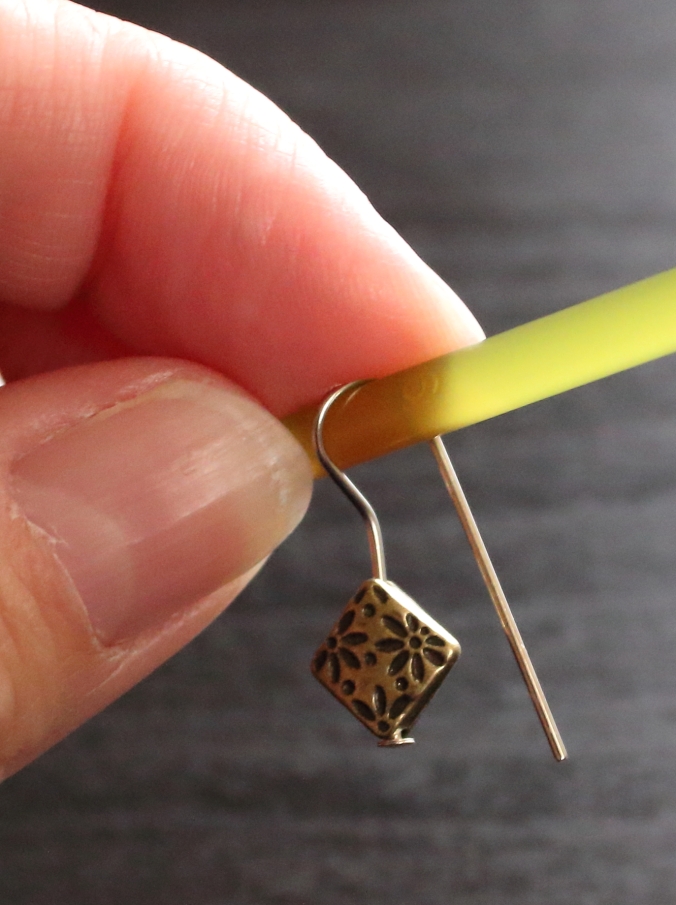
Step 2b. Bend the wire slightly back. Then with rounded pliers wrap the excess wire around the headpin.
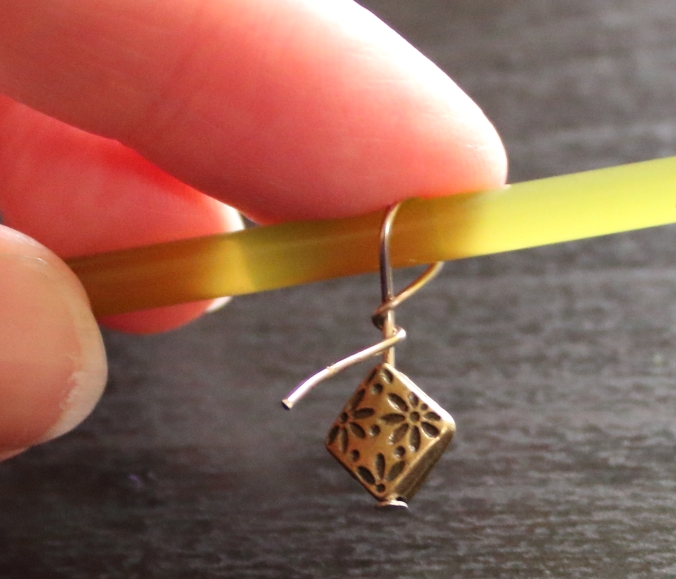
Step 2c. Take a look here and be sure you are happy with the length and wrap. This one is too long and loose.
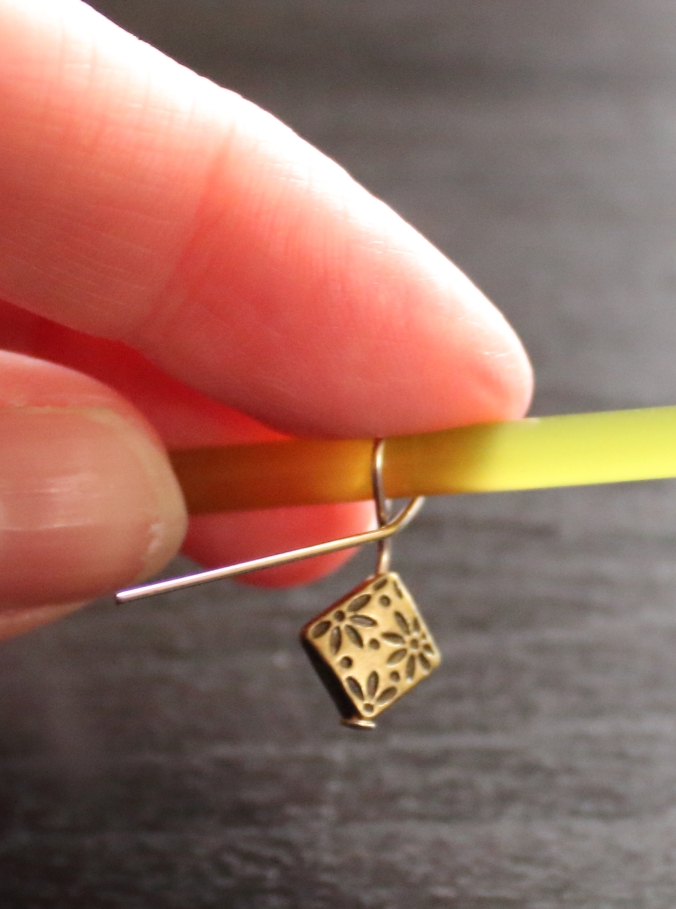
Step 2d. Start back over with a new headpin to get it just right.
Now you’ll have little bits of wire sticking out on the end that might snag your yarn.
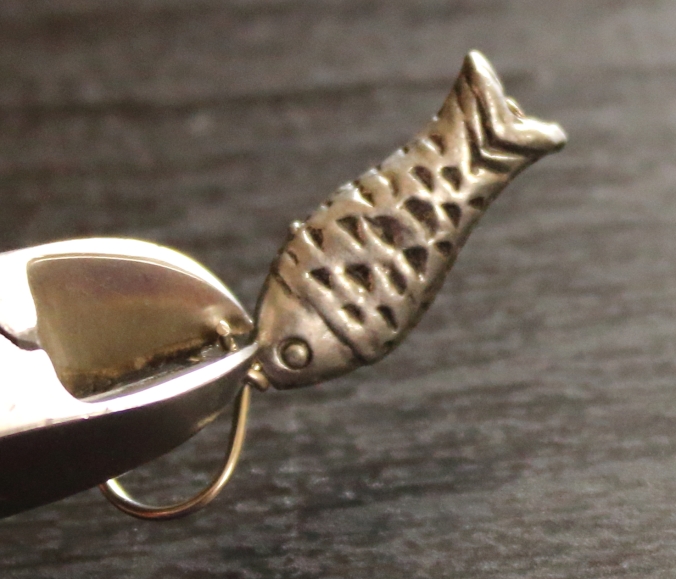
Step 3. Use the wire cutters to snip off the excess wire.
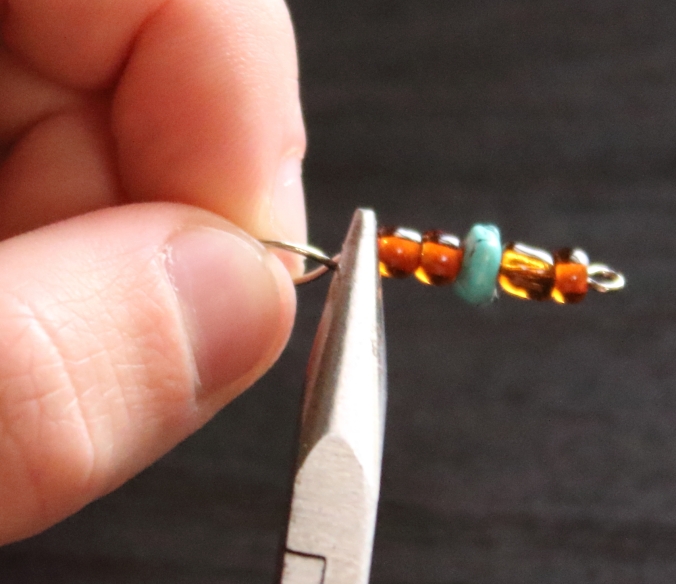
Step 4. With needle nosed pliers gently fold the edge in and down so that it will not catch on yarn.
That is the whole process. It may take some practice to get your beaded markers just how you want them. Do keep in mind that headpins are low in cost so scrapping one (or many) to start over is easy enough.
You can have a lot of fun with picking your beads to get your personal favorites. Here are some of mine:
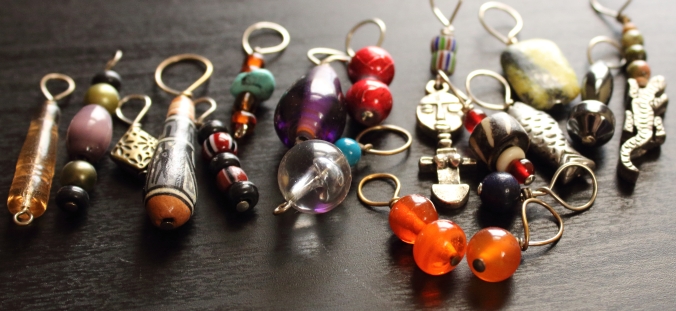
One other thing I love to do is rescue my lonely single earrings and make useful again as stitch markers. This is simple enough – use the wire cutters to snip the beads off the old earring headpin, arrange the beads as you like on a new headpin and work the wire like above.
So now that you’ve seen the process, are you itching to gather materials and start practicing already? Or have you decided instead to purchase some of the many, many beautifully crafted stitch markers available? I do both – I make most of my own stitch markers and sometimes I purchase sets that I love.
A quick Etsy search for stitch markers showed me more than 23,000 options priced from around $5 for a set to around $100 for a set with most closer to around $20. (That same quick Etsy search showed me some Star Wars themed ones that I might just ask for as a last minute Christmas gift for myself.)





